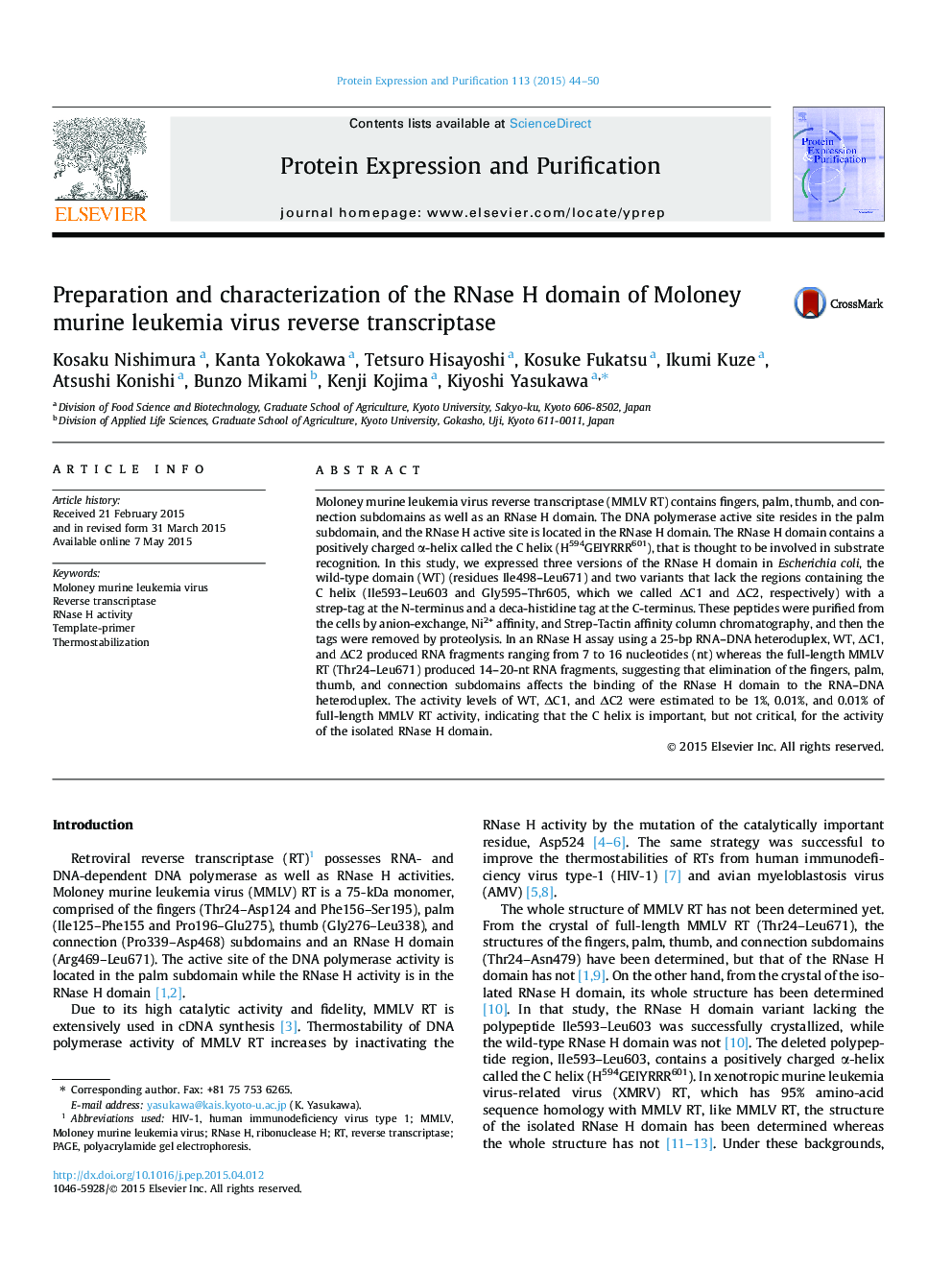| Article ID | Journal | Published Year | Pages | File Type |
|---|---|---|---|---|
| 8360144 | Protein Expression and Purification | 2015 | 7 Pages |
Abstract
Moloney murine leukemia virus reverse transcriptase (MMLV RT) contains fingers, palm, thumb, and connection subdomains as well as an RNase H domain. The DNA polymerase active site resides in the palm subdomain, and the RNase H active site is located in the RNase H domain. The RNase H domain contains a positively charged α-helix called the C helix (H594GEIYRRR601), that is thought to be involved in substrate recognition. In this study, we expressed three versions of the RNase H domain in Escherichia coli, the wild-type domain (WT) (residues Ile498-Leu671) and two variants that lack the regions containing the C helix (Ile593-Leu603 and Gly595-Thr605, which we called ÎC1 and ÎC2, respectively) with a strep-tag at the N-terminus and a deca-histidine tag at the C-terminus. These peptides were purified from the cells by anion-exchange, Ni2+ affinity, and Strep-Tactin affinity column chromatography, and then the tags were removed by proteolysis. In an RNase H assay using a 25-bp RNA-DNA heteroduplex, WT, ÎC1, and ÎC2 produced RNA fragments ranging from 7 to 16 nucleotides (nt) whereas the full-length MMLV RT (Thr24-Leu671) produced 14-20-nt RNA fragments, suggesting that elimination of the fingers, palm, thumb, and connection subdomains affects the binding of the RNase H domain to the RNA-DNA heteroduplex. The activity levels of WT, ÎC1, and ÎC2 were estimated to be 1%, 0.01%, and 0.01% of full-length MMLV RT activity, indicating that the C helix is important, but not critical, for the activity of the isolated RNase H domain.
Related Topics
Life Sciences
Biochemistry, Genetics and Molecular Biology
Biochemistry
Authors
Kosaku Nishimura, Kanta Yokokawa, Tetsuro Hisayoshi, Kosuke Fukatsu, Ikumi Kuze, Atsushi Konishi, Bunzo Mikami, Kenji Kojima, Kiyoshi Yasukawa,
